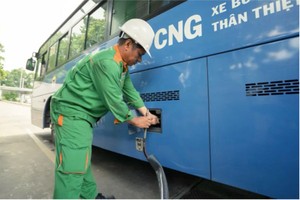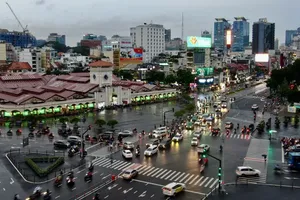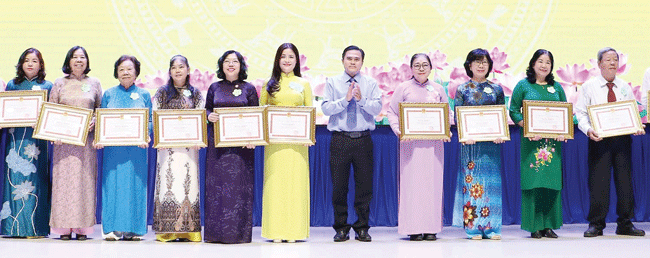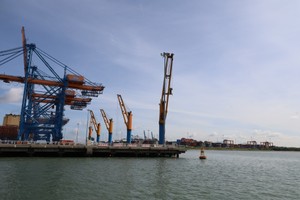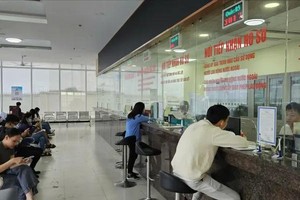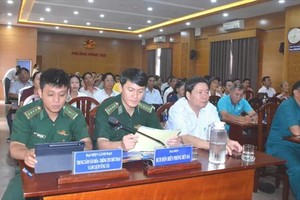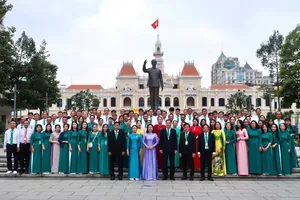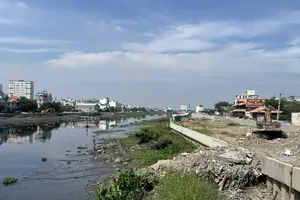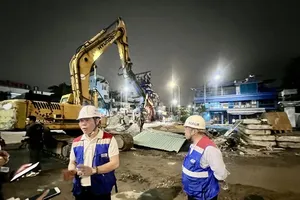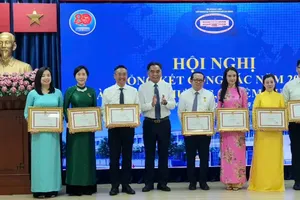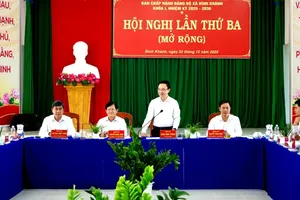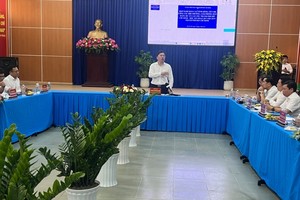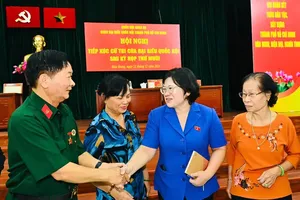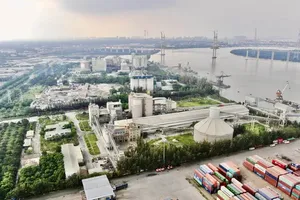 An aerial view of wastewater treatment plant of Tan Thuan EPZ (Photo: SGGP)
An aerial view of wastewater treatment plant of Tan Thuan EPZ (Photo: SGGP)
The HEPZA aims to build high-quality and competitive EPZs and EPZs suitable for businesses applying high technology and supporting innovative start-ups in the new model for EPZs and IZs.
Following the direction of the municipal People's Committee, Hepza and the authorities initially determined that, in the coming time, the EPZs and IZs will focus on developing industries with high science - technology content and high added value, the entirely brand-new industries in the industrial revolution 4.0 which are based on high-tech industry and digital economy.
In addition, the city will promote the development of supporting industries, ensuring the effective use of high-quality labor resources, having spillover effects as well as participating in the global value chain.
Regarding the model, the EPZs and IZs in Ho Chi Minh City will develop towards efficient use of land and water resources and be environmentally friendly. These are models of eco-industrial parks, which encourage investors to develop infrastructure and enterprises in industrial zones to apply production and environmental management systems according to the standards of the International Organization for Standardization (ISO) - an international nongovernmental organization made up of national standards bodies.
Furthermore, it will pay attention to the model of the industrial park - urban - service in association with the formation of synchronous areas in terms of technical and social infrastructure, linking the development of industrial zones with the process of urbanization in localities.
This model is expected to contribute to the reasonable population distribution in key areas with many industrial zones, forming industrial, urban, and service areas with a modern and fully equipped living and working environment, utilities for local residents and workers with the orientation toward the development of industrial zones and smart cities which meet international standards.
In addition, Hepza and competent agencies are also studying to develop a set of criteria for attracting investment in EPZs and IZs. Accordingly, these agencies make requirements to stipulate conditions on investment rate on an area of land, the number of employees used in accordance with the city’s actual conditions in addition to the provision of support and encouragement of investors of high-tech projects to expand production scale.
To eradicate the shortcomings, the HEPZA proposed for re-evaluation of investment projects using outdated technology, potentially causing environmental pollution, resource-intensive, and existing labor in EPZs and IZs by supporting and encouraging enterprises to switch to using new technology or relocation. The HEPZA will not consider extending the operation period or expanding the production scale of enterprises that do not convert technology and reduce labor intensiveness.
Even enterprises investing in EPZs and IZs can buy back land and factories of enterprises using outdated technology to attract new projects with more advanced technology. In the upcoming time, the city will develop a model of high-rise factories to improve land use efficiency and serve the needs of small and medium enterprises in the development of supporting industries. In the five years from 2021 to 2025, the city strives to have 100,000 square meters of high-rise factories.
EPZs and IZs must ensure that the percentage of trees meets current construction standards and the centralized wastewater treatment system must ensure the treatment meets the prescribed standards. Moreover, at the same time, the southern metropolis will develop a roadmap to upgrade the wastewater treatment system to the prescribed standards according to the municipal People's Committee’s Decision on the zoning of receiving wastewater from 2021 onwards.
To solve the problem of housing for workers and the overload of social infrastructure in the area where EPZs are operating, Hepza proposed to review the untapped clean land fund to invest in a qualified social infrastructure system for existing EPZs with no residential urban areas serving EPZs- IPs. In the areas, worker accommodation and preschools are given priority to meet the needs of workers while the city will upgrade and expand the area's existing employee service facilities.
With new EPZs and IZs with the planning of residential areas serving EPZs and IZs such as Tan Phu Trung Industrial Park, Southeast and Northwest Cu Chi expansion, Le Minh Xuan 3, Vinh Loc expansion, compensation work, site clearance and settlement of legal problems will be focused to accelerate investment in the construction of technical and social infrastructure works according to the approved planning.
Currently, EPZs and IZs are distributed fairly evenly in all districts of HCMC. However, in the coming time, the East of the city will have more challenges, because 4 EPZs including Linh Trung 1 EPZ, Linh Trung 2 EPZ, Binh Chieu IZ, and Cat IZ are located in the East of the city in a total area of 284.87ha. These EPZs are full of companies.
Therefore, in order to achieve the target of having 1,000-1,200ha of industrial land located in the Highly-Interactive Innovation Urban Area in the East of the city, responsible agencies will have to calculate very closely. According to many experts, this is a difficult problem, when according to the newly approved Thu Duc City planning adjustment task, the population here is expected to increase to 600,000 people instead of 300,000 people as in the previous plan. Population increases, leading to demand for more land to build technical and social infrastructure will increase. In that context, the functional sector will certainly have to find a development model for EPZs and IZs that is suitable with reality to solve existing shortcomings and to develop sustainably.
Tran Minh Ngoc from the Vietnam National University of Ho Chi Minh City said that the city should highlight the responsibilities of enterprises. Fortunately, Ho Chi Minh City has now determined that the development of an eco-industrial park is the solution to limit environmental pollution because the environment of EPZs and IZs is the living environment of workers and nearby residential areas. If workers in EPZs and IZs are healthy, it proves that the environment here is good, and when workers are physically and mentally healthy, labor productivity will increase. Therefore, the transformation from the traditional IZ-EPZ model to ecology is absolutely necessary.
He added that however, in Vietnam today, the planning and mechanisms and policies for the development of eco-industrial zones and export processing zones are not clear. Besides, for many businesses, profits are a high priority, so it is difficult to form ecological EPZs and IZs because it is very expensive. Currently, most enterprises developing IZs and EPZs take advantage of the land fund with 70 percent or 75 percent to build factories; hence, the rate of growing land is not large.
Therefore, in order to develop eco-industrial EPZs, the primary planning of each industrial park and export processing zones is very important. Planning makers should take heed of areas for growing trees. Investors must allocate 20 percent of land for growing trees while investors of EPZs and IZs will have 15 percent.
